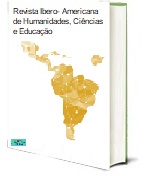DELIRIUM IN THE INTENSIVE CARE UNIT: BIBLIOGRAPHIC REVIEW
DOI:
https://doi.org/10.51891/rease.v8i7.6326Keywords:
Neurocognitive disorders. Delirium. Intensive Care Units.Abstract
The present study aims to carry out a narrative review of the literature on the prevention and treatment of delirium in patients adimitted to the Intensive Care Units (ICU). Bibliographic review of qualitative literature, through data from the Latin Library of Sciences Held-Virtual Database, being used as the following information bases: Literature and the Caribbean in Health (LILACS) and National Library of Medicine (NIH), in the research from March to May 2022. The following descriptors were used: “Delirium in ICU”, “Delirium in Elderly” and “Delirium”. It was observed that although the flexibility of ICU visits did not have a lower risk of delirium deficiency in general, patients who did not receive visits were 1.97 times more likely to develop hyperactive delirium and 2.32 times more likely to develop the mixed subtype. In addition, the study showed that a dexmede used in subdoses is able to prevent the occurrence of delirium, in addition to improving the confounding effects that already indicate the acute state. Therefore, there are few resources needed to allow studies to be carried out, being broader to solve this problem.
Downloads
Downloads
Published
How to Cite
Issue
Section
Categories
License
Atribuição CC BY

